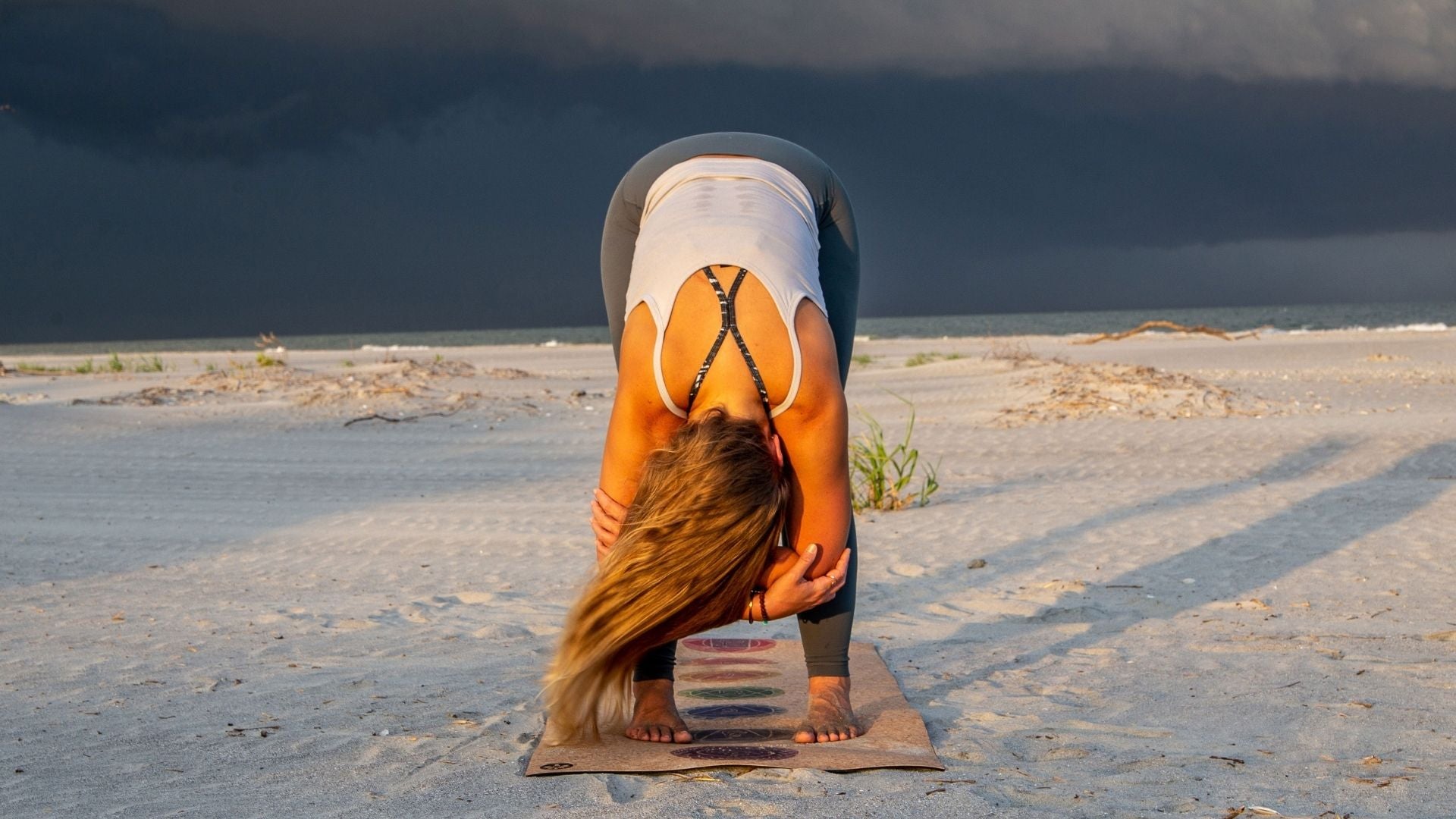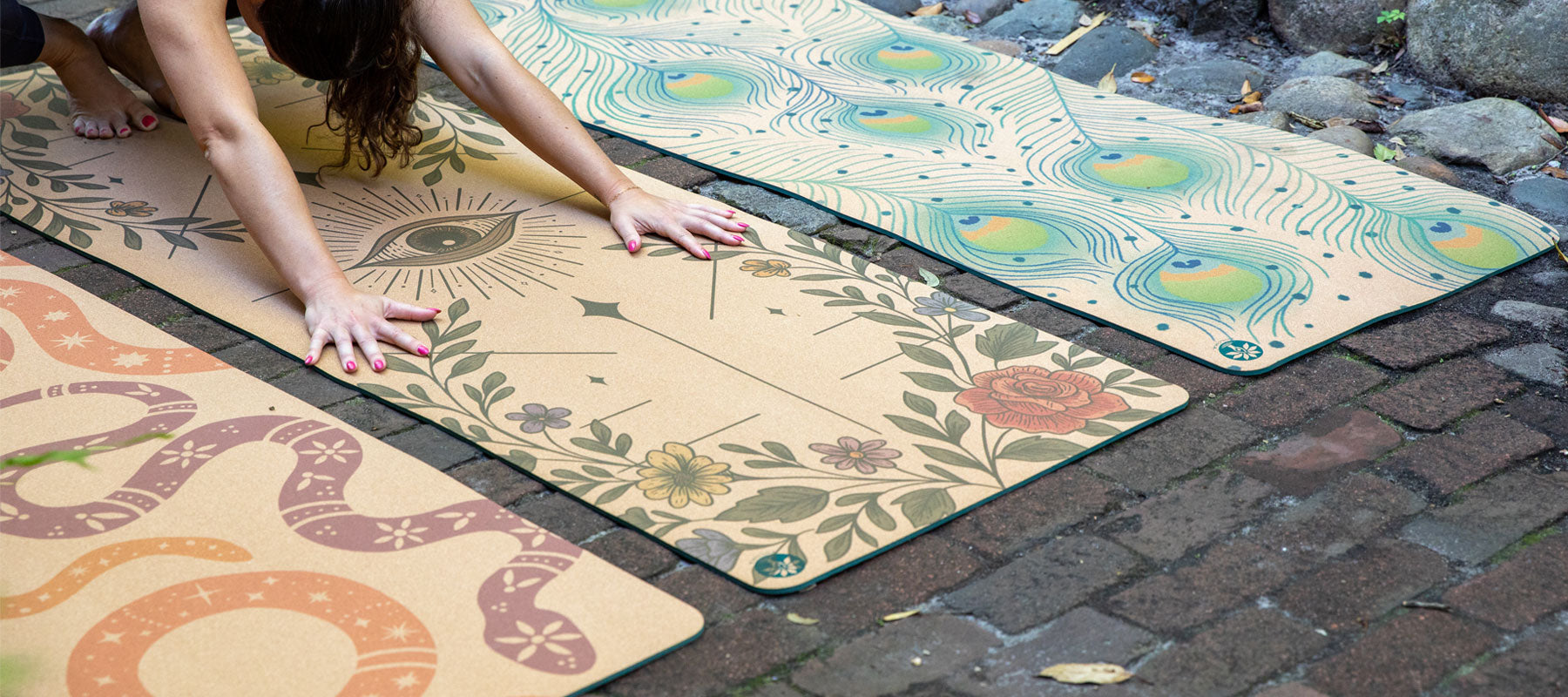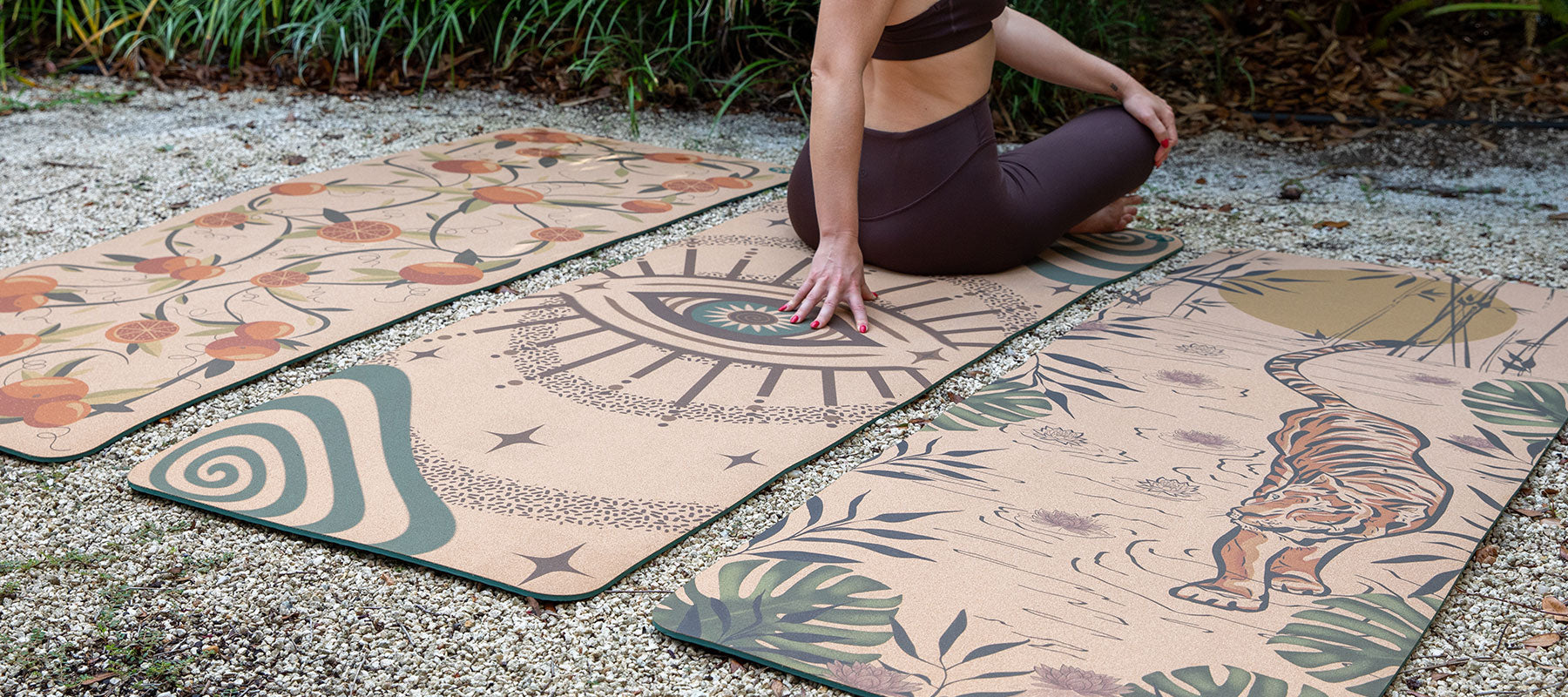The seven chakras (wheels) are energy centers that are believed to run along the human spine and into the head. Historically, the chakras have been used as a reference for many kinds of physical, energetic, and spiritual healing. Here is a crash course on what the chakras stand for, where they are each located, and how balancing them can benefit our well-being.
1. Muladhara – Root Chakra
- Sanskrit translation- Root support
- Physical location- Pelvis, tailbone, seat
- Mantra- LAM
- Element- Earth
- Color- Red
- Body parts associated- Reproductive glands, skeletal system, kidneys, urinary system, hips, legs, feet, lower back.
- Affirmation- “I am at peace with my surroundings”.
- Essential Oils- Ginger, sandalwood, rosewood
- Yoga Poses- Mountain pose, balancing poses, pigeon pose, warrior poses, savasana, yogi squat.
Balanced – Balance of the root chakra manifests in a sense of peace, safety and security, mainly in the areas of basic needs, personal finance and emotional stability.
Overactive – An overactive muladhara chakra will usually be caused by a person feeling like they do not have their basic human needs met. Extreme hunger or physical discomfort can put a person into survival mode, throwing off their root. A person with an overactive root Chakra may feel anxious, fearful and jittery. One may also experience digestive problems, eating disorders, low back pain, hip pain, ovarian and/or prostate issues.
Underactive– Someone with an underactive root chakra will usually daydream, experience poor concentration, and feel overly spacey and disconnected.
Balancing Practice– Make sure you are providing yourself with your basic human needs. In our western society we can get so overwhelmed with tasks that we forget to feed ourselves enough nutritious food, drink enough water, or to get enough sleep and proper rest. We can throw our systems into survival mode without even being conscious of it. Focus on your basic needs as a human being for a few minutes every day. Taking care of our bodies is fundamental to taking care of ourselves spiritually.
2. Svadhisthana – Sacral Chakra
- Sanskrit translation- The place of the self
- Physical location- Sacrum, low back, belly button
- Mantra- VAM
- Element- Water
- Color- Orange
- Body parts associated: Adrenal glands, large intestine, low belly, low spine
- Affirmation- “I feel pleasure and pain. I awaken my passion. I surrender to this moment”.
- Essential Oils- Jasmine, Rose, Sage
- Yoga Poses- Child’s pose, standing and seated forward folds
Balanced – Someone with a balanced sacral chakra is experiencing the earthly pleasures of life with joy and without shame. They can enjoy sex, fun, good food, and other pleasurable human activities without overindulging or depriving oneself. You are present in each moment.
Overactive – Someone who has an overactive Svadhisthana may exhibit addictive or gluttonous behavior. They have a fear of allowing in any pain or negative feelings.They may have gotten this way because a trauma caused them to find comfort in fleeting pleasure. This is someone who is splurging on life’s pleasures so much that they are actually harming themselves. They may experience obesity, physical dependency, emotional overreactions, codependency, or restlessness.
Underactive – Sometimes when life’s experiences cause us to make fear based decisions, we can end up depriving ourselves of joy and pleasure. When someone has an underactive sacral chakra, they get in the “all work and no play” state, usually leading to depression, impotence, decreased sex drive, and decreased creativity.
Balancing Practice– If you are experiencing an overactive 2nd chakra, try personifying complete independence for one entire day. You do not need the specific foods, people, activities, or ideas that usually consume you every day. It may be uncomfortable, and you may just stumble upon a new level of freedom in your life. If you are experiencing an underactive chakra, give yourself a day of pleasure. Eat your favorite foods, call your favorite people, and do your favorite activities. The power of one day on the bach eating tacos with your best friend might just be all you need to find balance.
3. Manipura – Solar Plexus
- Sanskrit Translation- Lustrous Gem
- Physical Location- Breastbone, bottom ribs
- Mantra- RAM
- Element- Fire
- Color- Yellow
- Body parts associated- Pancreas, stomach, liver, small intestine, gallbladder
- Affirmation- “I am courageous. I am whole. I stand in my power.”
- Essential Oils- Rose, Frankincense, Myrrh, Sandalwood
- Yoga Poses- Plank Pose, Warrior Pose, Boat Pose
Balanced – Someone who has a balanced third chakra is confident in their wisdom, decisiveness, and personal power. They are discerning about what does and does not serve them. They are strong in their own truth.
Overactive – An overactive solar plexus chakra can manifest in a short temper, being controlling of others, greed, micromanaging, and a lack of empathy and compassion.
Underactive – When someone is wrong, or if they are often ignored, they can start experiencing an underactive manipura. This often shows up in the form of insecurity, indecisiveness, passive aggression, and being timid or needy.
Balancing Practice – Face a fear. Remind yourself that your intuition is usually right. Trust yourself and others. Stand firmly on both feet. Strengthen your core.
4. Anahata – Heart
- Sanskrit Translation- Unstruck
- Physical Location- Heart, chest, thoracic spine
- Mantra- YAM
- Element- Air
- Color- Green
- Body parts associated- Thymus gland, heart, lungs, circulatory system, upper back, and shoulders.
- Affirmation- “I am love. I am deeply connected to all other creatures. I am kind. Others are kind.”
- Essential Oils- Lavender, Angelica, Rosemary
- Yoga Poses- Camel, Wheel, Bridge, Fish
Balanced – Someone with a balanced anahata chakra truly feels love for themselves and for others.
Overactive – An overactive heart chakra causes one to ignore personal boundaries. They begin giving too much of themselves and lose focus on personal care. The put others needs before their own to a point of self harm. Physically, they can experience heart palpitations and heartburn.
Underactive – Having an underactive heart chakra is a common imbalance that is usually caused by heartbreak. When we have an underactive fourth chakra, we find it hard to get close to others or to rust. Physically, we feel out of touch with our bodies and may experience circulation problems.
Balancing Practice– Spend time with people you love and remind yourself why you love them. Volunteer. Do something kind for yourself or for someone else. Meditate on self-love. Give to charity or do a good deed.
4. Vishuddha – Throat
- Sanskrit Translation- Very Pure
- Physical Location- Throat, neck, shoulders, jaw, tongue
- Mantra- HAM
- Element- Space
- Color- Blue
- Body parts associated- Thyroid Gland, ears, mouth, lips, teeth, tongue
- Affirmation- “I am free to express myself with love, truth, and gratitude.”
- Essential Oils- Jasmine, Neroli
- Yoga Poses- Fish pose, Shoulder stand, Plow pose
Balanced – When you have a balanced throat chakra, you speak clearly from a place of love and truth. It is easy for you to find the words to express yourself. Writing and learning other languages and ways of speaking seem to come naturally. You are helpful to those around you on their paths to enlightenment.
Overactive – Overactive 5th chakras cause us to be loud, to interrupt others, and to have a hard time listening. They often embellish, exaggerate, or fib. Usually this imbalance comes from feeling unheard, or from a desire to cover up truth. Physically an overactive vishuddha may manifest in throat pain, infections, mouth ulcers, and dental problems.
Underactive – Those with an underactive throat chakra are shy, quiet, and unable to express feelings, thoughts, and truths. Often this imbalance can have a root of repression, secrecy, or an overall feeling of being flawed.
Balancing Practice– Ask yourself if your words are kind, necessary, and true.
6. Anja – Third Eye
- Sanskrit Translation- Beyond Wisdom
- Physical Location- Between the eyebrows, center of forehead, pineal gland
- Mantra- AUM
- Element- Wisdom
- Color- Indigo
- Body parts associated- Pituitary and pineal gland, forehead, brain
- Affirmation- “I honor my intuition. I accept my path. I am healing body, mind, and spirit.”
- Essential Oils- Angelic Root, Cypress, Vetiver
- Yoga Poses- Child’s Pose, Meditation
Balanced – Someone who has a balanced anja chakra feels in tune and connected with both the physical and spiritual worlds.
Overactive – Someone who has an overactive third eye chakra has a hard time relating in the human experience. They are constantly distracted by the paranormal or spiritual realm, finding it difficult to carry our day to day tasks.
Underactive – Having an underactive 6th chakra is very common. These people feel very disconnected from spirituality or higher power. Physically this often manifests in headaches, sinus allergies, and fatigue.
Balancing Practice – Meditation. Begin or grow your meditation practice.
7. Sahasrara – Crown
- Sanskrit Translation- Thousand Petaled
- Physical Location- Crown of the head and infinitely upward to the heavens
- Mantra- AUM
- Element- Consciousness and spirituality
- Color- Violet
- Affirmation- “I go beyond limiting beliefs. I am divine. I am infinite.”
- Essential Oils- Rosewood, Lavender, Sandalwood, Gurjum, Galbanum
- Yoga Poses- Headstand, Savasana, Tree Pose
Balanced – Balance in this chakra is the ultimate spiritual goal. It could be compared to reaching the Buddhist “Nirvana”. When you reach balance in your crown chakra, you have conquered suffering, death, and you are no longer human. It is best for human beings to focus only on balancing the other six chakras during their earthly life. The point of the crown chakra is just to be acknowledged. The idea that we are divine creatures is helpful for almost any other imbalance issue. A human being cannot have an overactive or underactive chakra, and the best way to work toward this spiritual goal is to balance the other six chakras.
Keep the chakras in the forefront of your mind. Visualize them in your mind’s eye, and on your mat with our beautiful Chakras Aura Cork Yoga Mat.



Comment
Very helpful.